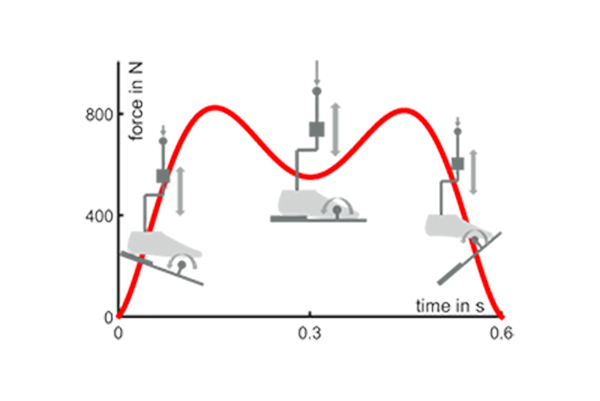
ISO 16955 Prosthetic Foot Characterization

In Short
To provide an amputee with a suitable prosthetic foot that meets the individual user's needs, a standardized characterization of functional parameters is necessary. The aim of this research project is the development of a standard proposal as input to the international working group and the development and evaluation of a new electromechanical driven testing machine for the characterization of prosthetic feet.
In Detail
Challenge:
Choosing a suitable prosthetic foot that meets the individual user's needs (e.g. degree of mobility, walking off-road, running) is a challenge. The question of how much a prosthetic foot is suitable for a certain patient and fulfills the required functions, can currently only be answered by tests with subjects. These tests are expensive, time-consuming and not standardized or comparable. The amputee, technician and reimburser must therefore rely on the prosthesis manufacturer's statement. However, this requires a detailed analysis of the individual needs of the amputee and his or her capabilities and a correlation of these with the functional performance characteristics of the prosthetic device. There is no common international standard for quantification of the performance of the prosthetic feet, yet. However, this mechanical evidence is elementary for a neutral selection or creation of the most optimal prosthetic foot for the individual patient.
Project objective:
The objective of the project is to finalize the technical specification ISO\TS 16955 as input to the international working group with the aim to quantify the mechanical prosthetic foot properties. The international working committee Tc168 WG3 developed the technical specification ISO/TS 16955 with the intention of closing the gap between the subject-based tests and more realistic mechanical properties. ISO/TS 16955 is based on ISO 22675, with the difference that additional sensors (multidimensional force and torque sensors) are integrated into the already complex test rig. In contrast to ISO 22675, the effect of gliding elements must be avoided in order not to influence the sensitive measurement of the foot characteristics. It is possible to measure the dynamic properties of the prosthetic foot during the stance-phase from heel strike to toe-off, which the prosthesis user feels while walking and which can help him to achieve more mobility. These mechanical performance properties should help all stakeholders to select the most suitable prosthetic foot. The aim of this research project is the development of an international standard proposal and the development and evaluation of a new electromechanical driven testing machine for the characterization of prosthetic feet.
Insights into the project
